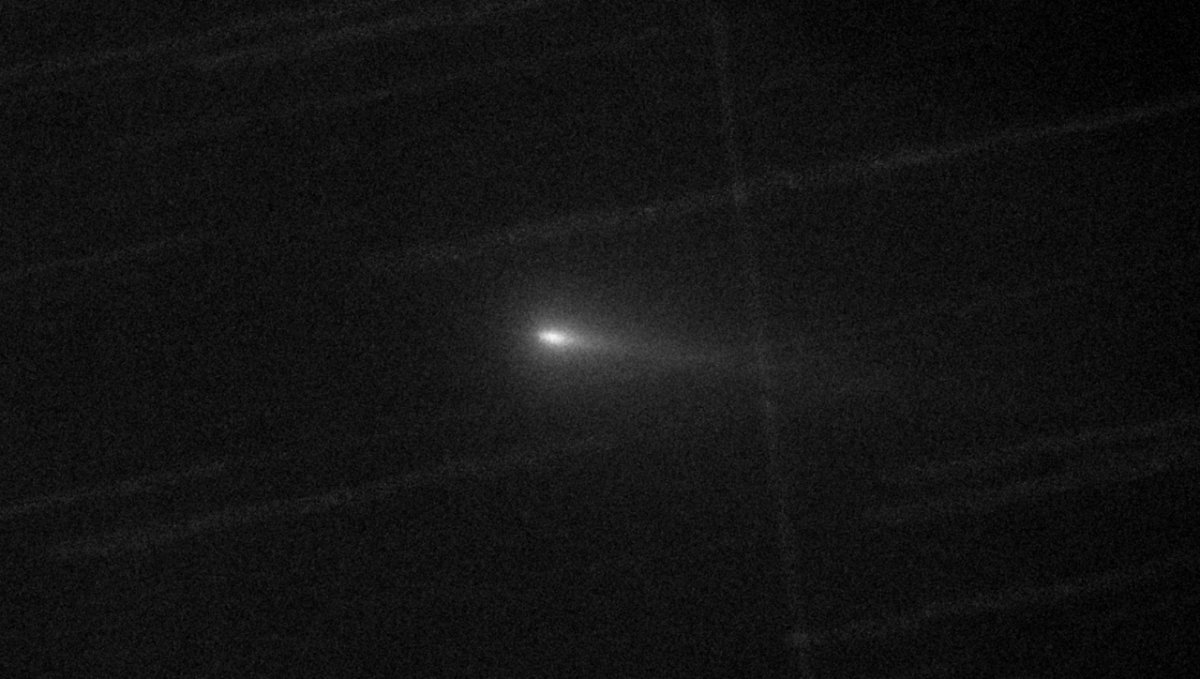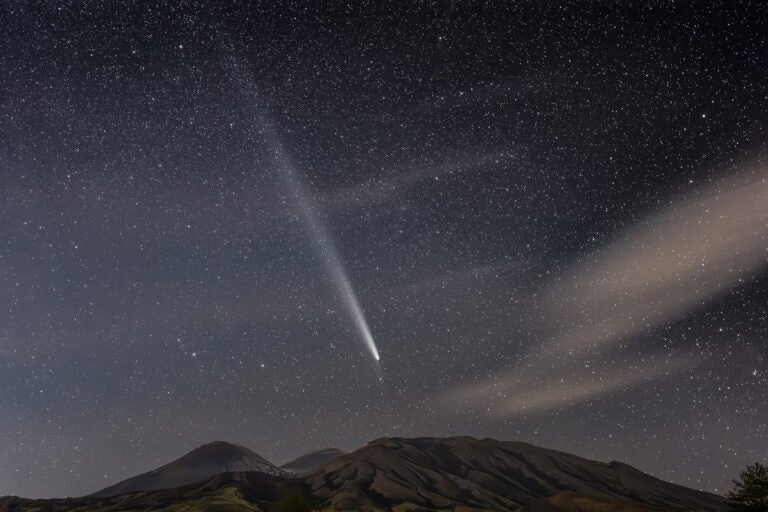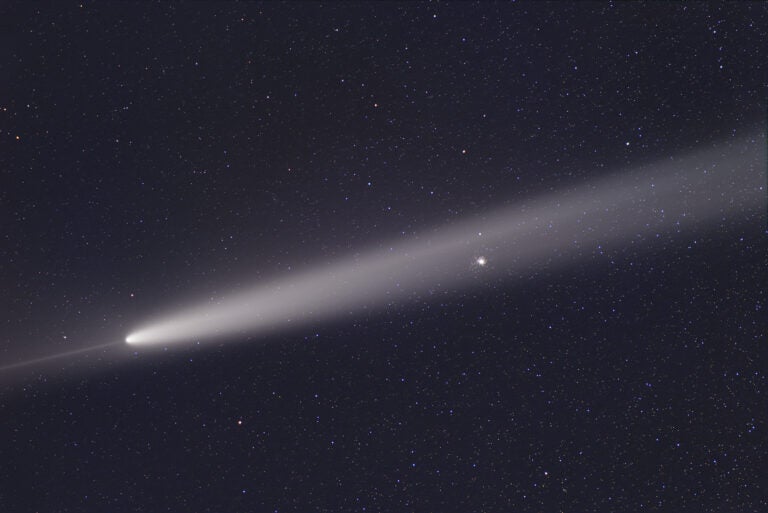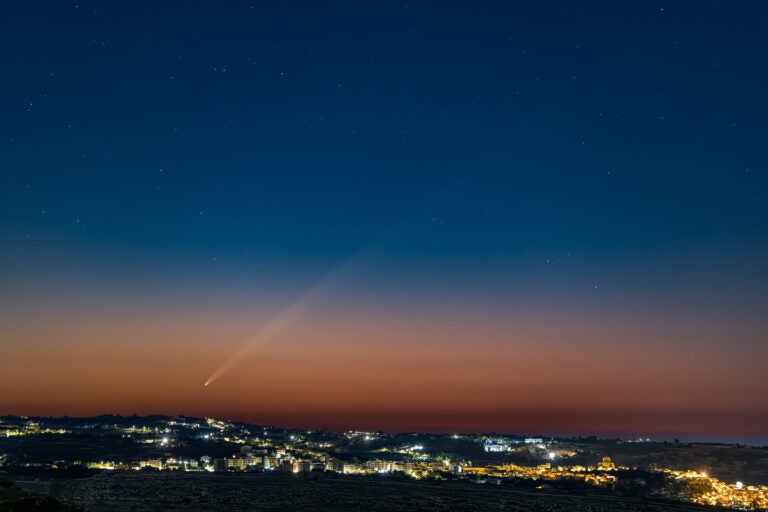
When comet C/2024 S1 (ATLAS) was first discovered in late September, it was almost immediately identified as a member of the Kreutz family of Sun-grazing comets. But it was highly unusual for a Kreutz comet — virtually all of these are only discovered in their last hours or days of existence, as they plunge toward the Sun and get spotted by the SOHO solar observing satellite. But this one was found more than a month before perihelion, its closest solar approach, and it was spotted using ground-based telescopes.
Such early discoveries of Kreutz comets only happen once in a decade or so, and those have often turned out to be spectacularly bright comets. That includes the brightest one of all in the last century, Comet Ikeya-Seki (C/1965 S1) in 1965. So, hopes ran high that this one could turn out to be another dazzling sight. Predictions based on its distance and apparent brightness when discovered suggested that near or just after perihelion, it could become brighter than Venus, possibly observable even in daylight. Headlines blared about a possible spectacular “Halloween comet,” if it were to flare up after its perihelion on Oct. 28.
No such luck. It quickly became apparent to experienced observers that this comet was not following the predicted course of brightening as it approached the Sun. Some observers saw signs even in early October that the comet’s nucleus seemed to be elongated, a possible indication that it was already fragmenting. And, as you know from a lack of further headlines, ATLAS was no spectacular sight in the late October sky.
Initial excitement
After it was found by the ATLAS observatory in Hawaii on Sept. 27, “I was the first to follow it up after discovery,” amateur astronomer Sam Deen tells Astronomy. An active amateur who, along with a couple of friends, runs a remotely operated 17-inch telescope in Chile, Deen is especially interested in combing through archival datasets in search of comets, asteroids, and other transient phenomena.
“It’s especially challenging,” he says, “when the comet has just been discovered just a couple of days before, and you have to predict what it’s going to do in the next month, when it could potentially become brighter than naked-eye magnitude, or just fizzle out entirely.” To do so, he says, he tries to eke out every bit of data that might not be obvious but could help in making those predictions.
When he made his first observations, there was still a great deal of uncertainty about the comet’s orbit. “It wasn’t even possible to tell if it was parabolic or not,” and thus whether this was its first visit to the inner solar system. But it was already clear that it was on a trajectory to pass close to the Sun. So, he tried plugging elements into an orbit-finding program based on the assumption that it was indeed a Kreutz Sun-grazer. “I set the eccentricity and the perihelion to be like a Kreutz Sun-grazer, and the rest of the elements just fell right into place,” he says, making the identification likely.
Of the more than 5,000 comets known, more than two-thirds are in the Kreutz family, believed to all be remnants of a much larger comet that shattered a few thousand years ago. “But most of those we only discover a few hours before they’re at perihelion,” Deen says. “So, finding one from the ground is a very impressive feat, so that immediately had me quite excited.”
The last time that happened was with Comet Lovejoy in 2011, which became the fifth-brightest comet seen in the last 100 years. So there was indeed reason to be optimistic.
But what went wrong?
From fabulous to fizzle
At the time of discovery, Comet ATLAS was farther from the Sun than Lovejoy had been, and also farther from Earth, and yet was brighter than Lovejoy. That made it seem likely it would perform similarly. The problem was, everyone was assuming that the brightness they were seeing was typical of the object, and that turned out not to be the case. In fact, the comet had apparently just had a major outburst, perhaps triggered by the beginning of its disintegration. So, rather than continuing to brighten, it actually faded somewhat during those early days.
Karl Battams, a computational scientist at the U.S. Naval Observatory whose job includes tracking all of the Kreutz Sun-grazing comets that enter the SOHO field of view, says that typically when these comets are first seen so far from the Sun, by the time they get within two or three days of closest approach “they increase in brightness by several orders of magnitude.” That suggested, on paper, that “[ATLAS] could reach visual magnitudes of –4, –6, even –8. You can kind of pick your number to fit your narrative at that point.” But he was a bit skeptical of those predictions from the start, he says.
Having personally studied thousands of Sun-grazing comets over the last 20 years, “I’ve seen some weird behaviors from more than a handful of them,” Battams says. And the first reports seemed concerning, he says, because of wide variations in the brightness estimates. He worried that maybe “the reason it sort of appeared out of nowhere was because it was already undergoing some kind of an outburst.” And then, “we all saw what happened in the final few days, where it really fizzled at the point where it should normally have really taken off in brightness.”
In the end, the comet never got brighter than about magnitude 2, and even that was when it was too close to the Sun for all but satellite observations. “By then, to be honest, it is generous to even call it a comet,” Battams says. “Even though the object formerly known as Comet ATLAS was that bright, really what we were seeing was the remains of the comet, the debris cloud, completely vaporizing. It wasn’t a nucleus at that point, it was literally just a debris cloud.”
Still of value
Daniel Green, who runs the Central Bureau for Astronomical Telegrams, the official clearinghouse for all comet discoveries, says that despite its disappointing performance, Comet ATLAS “was still unusual, and scientifically a very interesting comet for those of us who follow comets.” Because it was discovered so long before its demise, a much larger database of observations was collected that could help in understanding this whole class of comets.
And since, on average, one of these exceptional early-detection Kreutz comets shows up about every decade or so, and many of them have gone on to become among the brightest comets ever seen, Green says, “one of these days, hopefully we’ll have a really big piece [of the original Kreutz parent body] like in 1965, and really have a spectacular show.”




